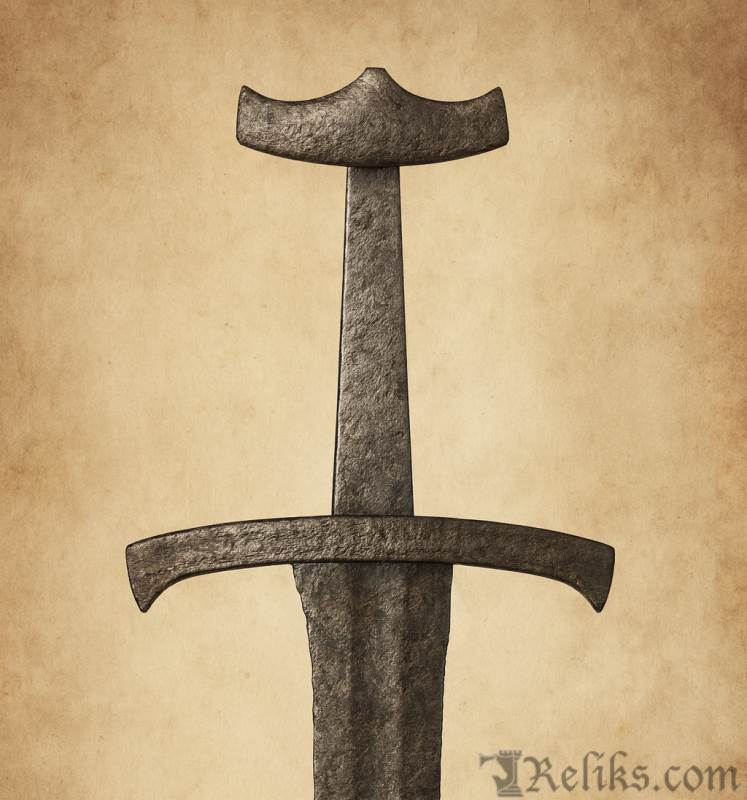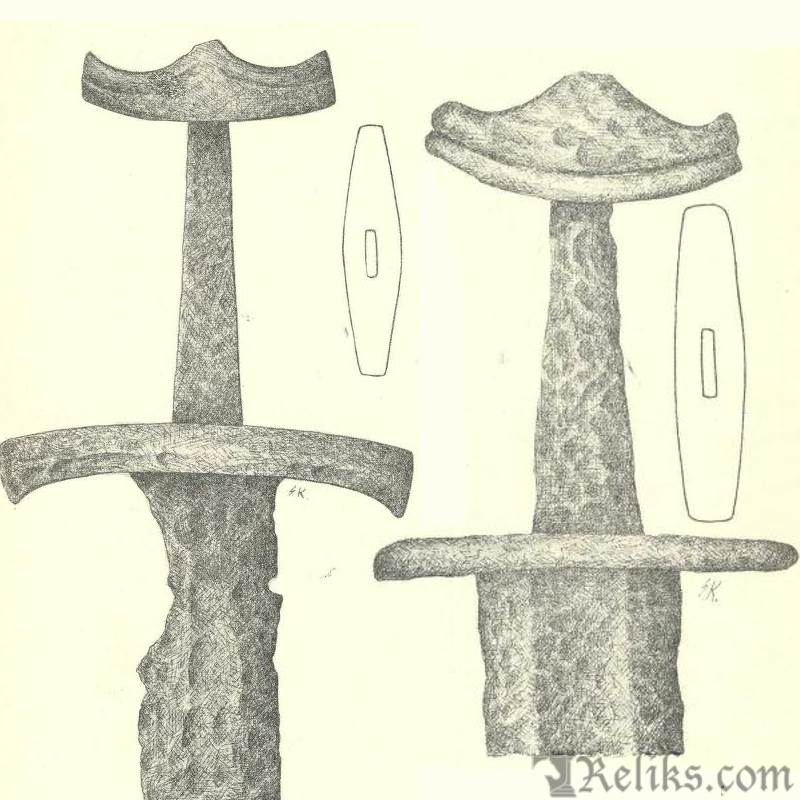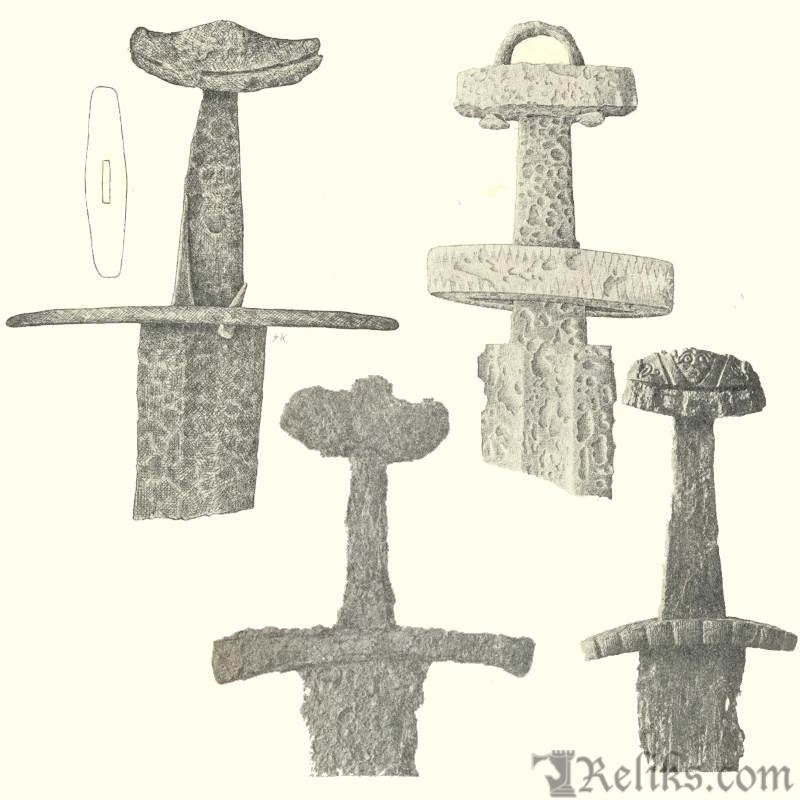Viking Sword Type Y – The Crest-Hilt of the Late Viking Age (c. 900–1000+)
A Sword for a Shifting World
By the middle decades of the 10th century, Viking society was no longer the same as it had been a century before. Raids had matured into permanent settlements, armies were growing larger, and the martial culture of Scandinavia was entering its final Viking phase. In this context, Type Y swords stand out as a practical yet distinctive hilt form: one that carries echoes of earlier prestige models like Type P, but reinterprets them in a simpler, sturdier, and more locally adaptable style. The small crest along the upper guard, paired with long, sweeping lower guards, gave these swords an unmistakable outline—both functional in combat and expressive of a new, pared-down aesthetic.
Anatomy of the Hilt

Viking Sword Type Y – The Crest-Hilt
Type Y hilts are built around a one-piece upper guard with a low horizontal profile that rises to a subtle crest at the center. Some carry a shallow groove across this crest, a “ghost seam” recalling the older joint between guard and pommel even though the pommel has disappeared as a separate piece. Beneath, the lower guard often sweeps downward in a long arc, its square-cut ends tapering neatly.
There are really two flavors of Y:
- A stouter, P-like subgroup that seems to be a Norwegian simplification of Type P—compact, no silver sheathing, and sometimes with short guards.
- A common low-bar form that dominates eastern Norway and Trøndelag, defined by its long, low guards and rounded pseudo-pommel ends.
Most examples measure 7.5–9 cm across the upper guard, with lower guards often reaching an impressive 14–17 cm. Decoration is rare: a few incised lines, occasionally simple inlay, and at least one marked blade from Grov (B 1069) bearing inlaid symbols.
Blades and Function

Petersen (fig130-131)
Of 17 determinable examples, 16 are double-edged, with just a single-edged outlier. Pattern-welding seems to have disappeared entirely by this stage, replaced by plain steel blades. Later finds, like the Skaaden sword from N. Fron, show narrow, deep fullers—an unmistakable sign of the coming medieval style. These were weapons designed to cut, thrust, and endure, not to dazzle with ornament.
Where and When
Type Y is well represented in Norway, with 19 examples known. The P-like subgroup is concentrated in the southwest and coastal westlands, while the common low-bar form dominates inland eastern Norway and Trøndelag. One striking northern case is T 9372 Tommeide in Nordland, found with double oval brooches that firmly place it in the 10th century.
Beyond Norway, Type Y is found only eastward—in Sweden, Finland, and Russia—always in the common low-bar version. This suggests that while the west-coast subgroup grew locally out of P-type habits, the widespread low-bar form was part of an eastern fashion current.
Dating the Type

Petersen (fig132-135)
Type Y spans most of the 10th century. Early finds link it with I-type spears and E-type axes—equipment still rooted in the first half of the 900s. By mid-century, Y appears alongside G- and K-type spearheads and younger axe forms, signaling its place in the mainstream of Viking armament. At the younger end, late 10th-century examples show narrow fullers and co-occur with M-type axes, low shield bosses, and younger rattles. The evidence shows a type that begins around 900, thrives in the mid-century, and endures right into the threshold of the 11th century.
Origins and Relationships
Type Y clearly relates to Type P: the small crest of the upper guard is a plain descendant of P’s peaked pommel line, stripped of its bronze or silver cladding. At the same time, hybrids exist that marry Y-style uppers with Q- or P-like lowers, blurring boundaries in typical Viking workshop fashion. Its eastern distribution beyond Norway also argues for continental or Baltic influence shaping the form.
Closing Reflection
Type Y is not the flashiest of Viking swords, but it may be one of the most revealing. It captures the late Viking tendency toward simplification—streamlined hilts, long functional guards, and plain steel blades—while still carrying a hint of older prestige styles in its crest and grooves. Its spread eastward shows how ideas and fashions circulated across the Baltic world, while its presence in Norway’s inland valleys reflects a weapon form that was accessible to more than just the elite. In this way, Type Y bridges two worlds: it honors the decorative lineage of earlier Viking hilts, but points squarely toward the sober, standardized arming swords of the medieval age.
Core classification based on Jan Petersen, De Norske Vikingesverd (1919). Additional commentary by Reliks.com.